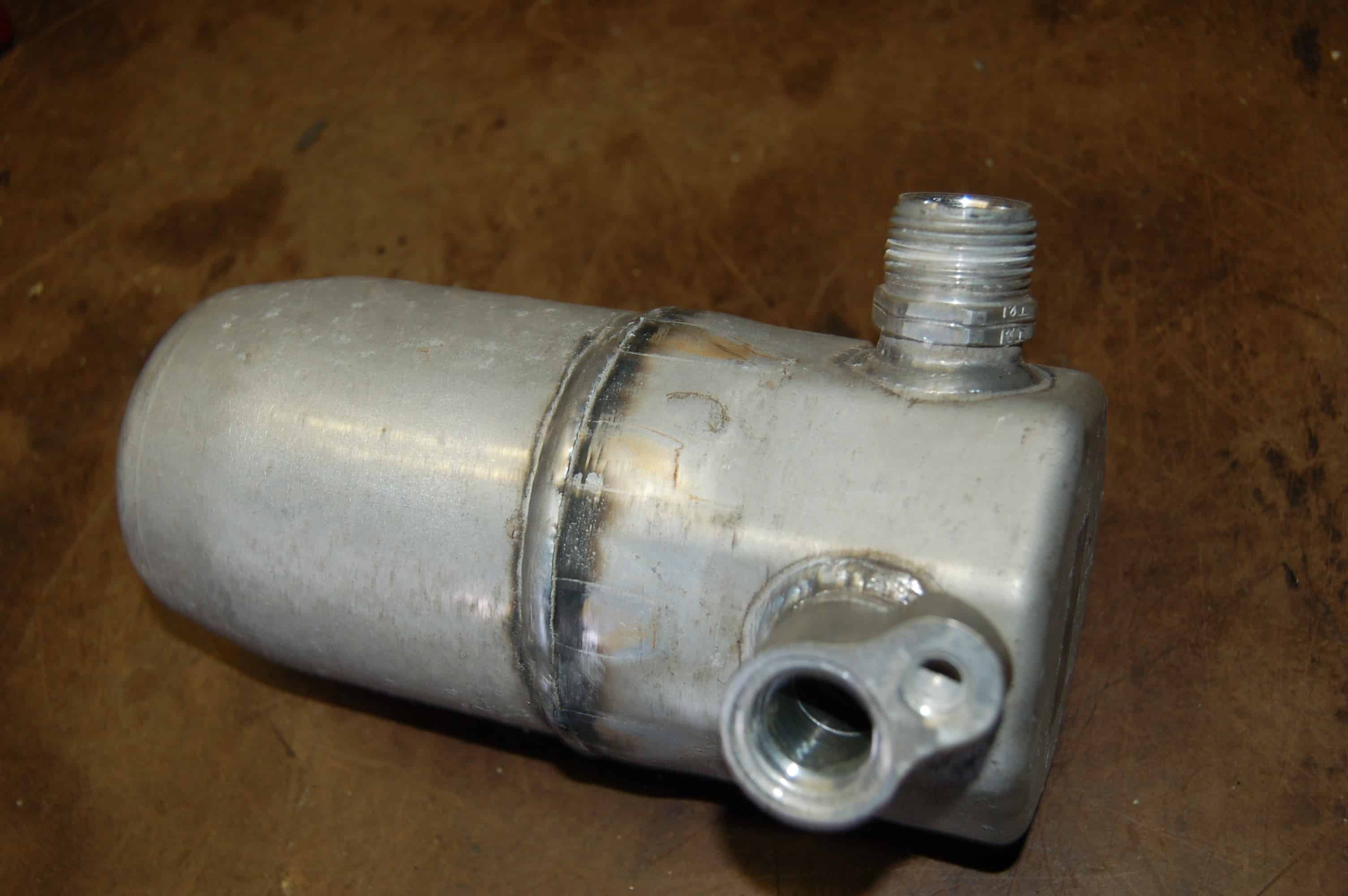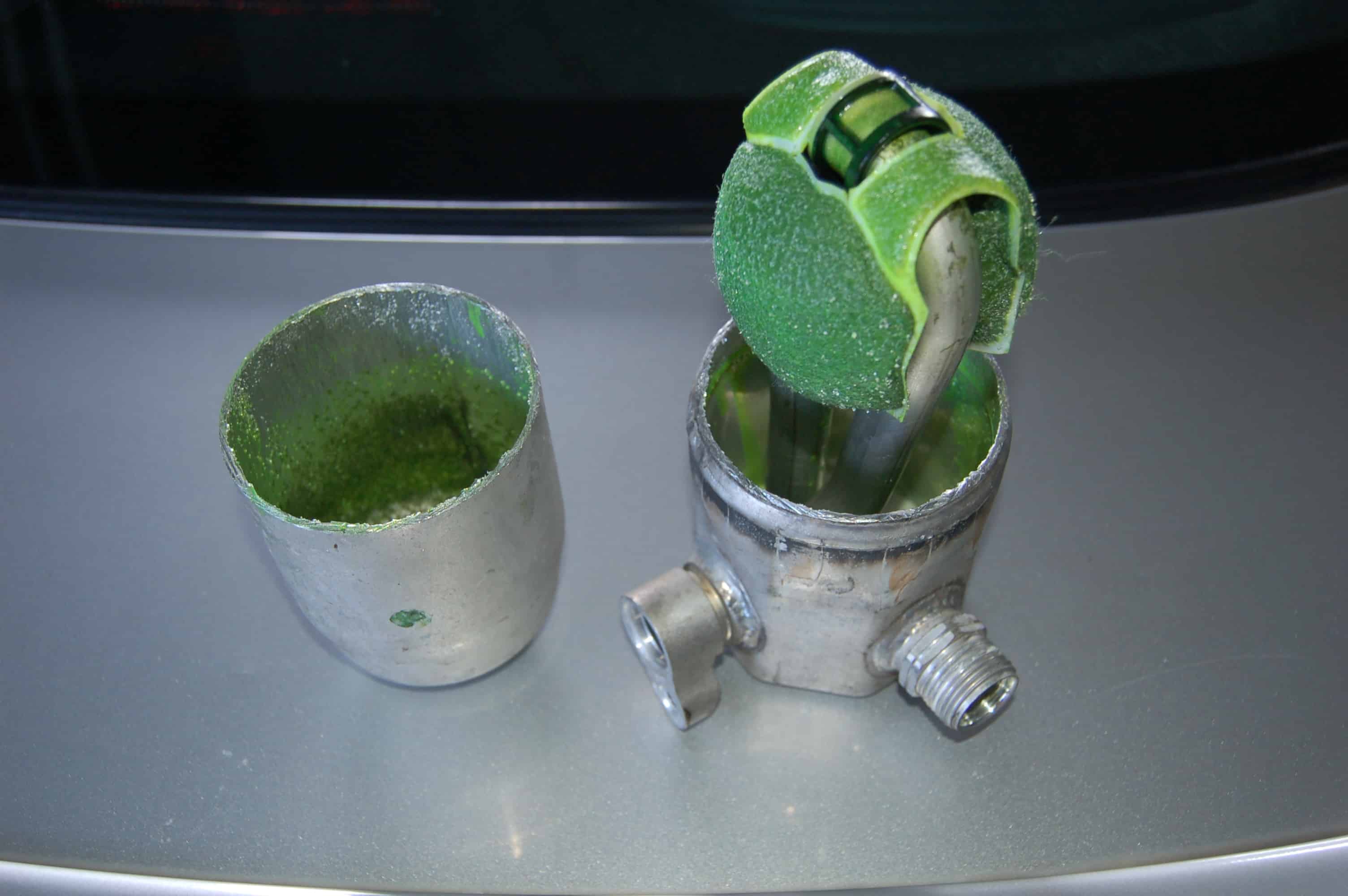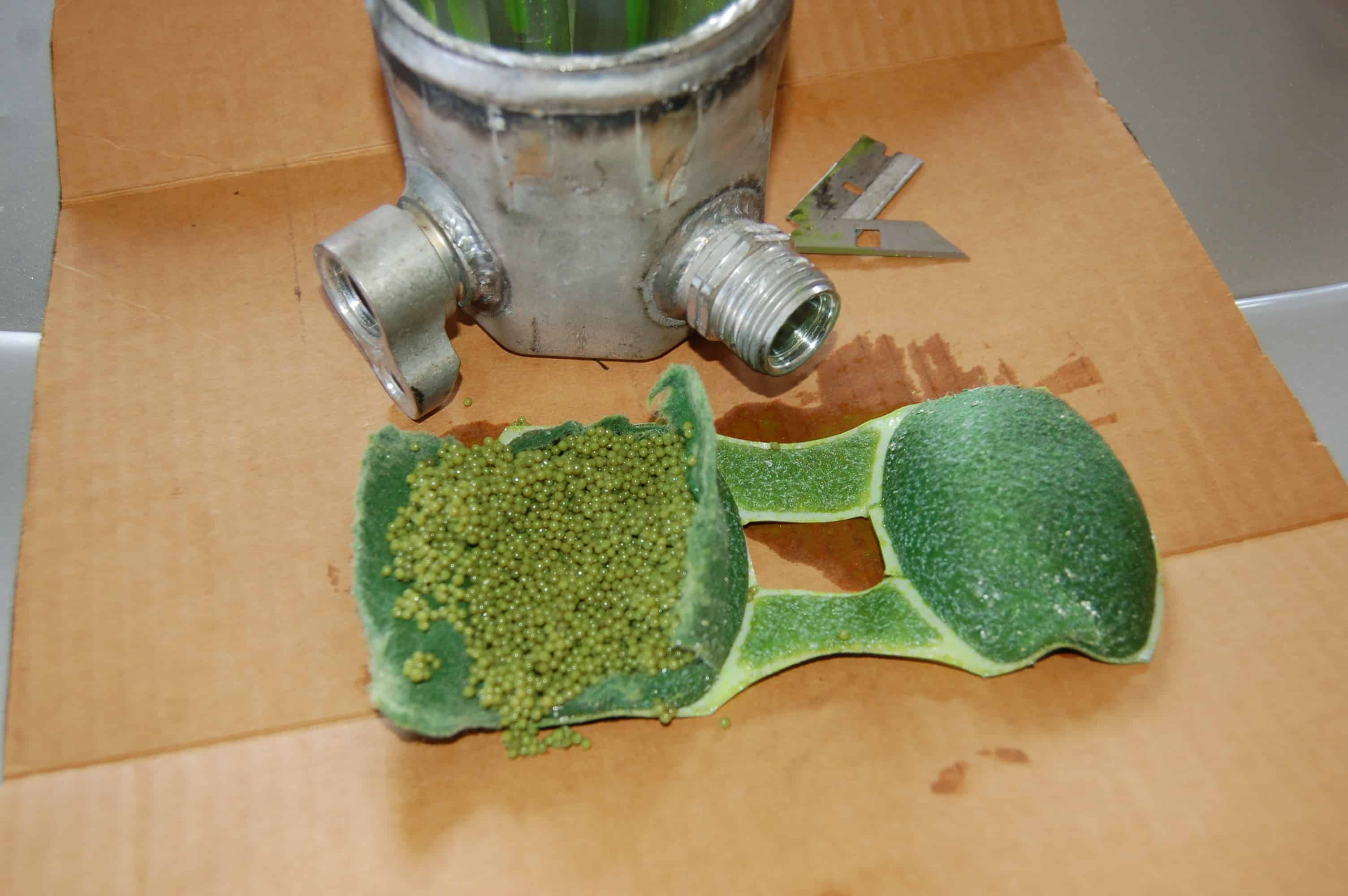What does desiccant look like after 16 years?
By Steve Schaeber, MACS Technical Editor
We’ve all heard this word before, probably for the first time during one of our HVAC (heating, ventilating and air conditioning) classes when we were aspiring young technicians still in high school, college or post-secondary votech school. We learned that the desiccant in a mobile A/C system is located inside either the accumulator in an FOT (fixed orifice tube) system, or inside the receiver / dryer of a TXV (thermal expansion valve) system.
The job of the desiccant is to adsorb moisture, or water that may be in the system. If left unchecked, this moisture can be extremely harmful to air conditioning components. It can freeze inside the expansion device, restricting the flow of refrigerant into the evaporator. There is also concern that if it combines with refrigerant, it can develop hydrofluoric acid, which can damage metal surfaces inside the system. Too much moisture can also cause high head pressures, adversely affecting A/C system performance.
When desiccant is new, of course, it’s usually clean, dry and white or clear in color. But since it’s typically located inside a solid steel or aluminum cylinder, we don’t often get to see what it looks like, or what happens to it over time. That’s why we decided to take our latest accumulator over to the workbench and cut it open to see what’s inside. This one is off of a 2001 Pontiac Grand Prix that only has 106, 066 miles on the odometer. It’s a Delphi (then Harrison Thermal Systems) Accumulator / Dehydrator, part number 7841.
 Accumulators are usually easy to spot after you’ve worked on mobile A/C systems for a while. They are usually made from aluminum, and are quite a bit larger than their R/D counterparts.
Accumulators are usually easy to spot after you’ve worked on mobile A/C systems for a while. They are usually made from aluminum, and are quite a bit larger than their R/D counterparts.
 We cut this accumulator just below the factory welded seam. Inside you can see the desiccant pouch, dip tube and filter screen.
We cut this accumulator just below the factory welded seam. Inside you can see the desiccant pouch, dip tube and filter screen.
 Using a razor blade it’s easy to cut open the felt pouch which contains the desiccant beads. GM puts UV Dye in most of their A/C systems right at the factory, which is why the beads and sack look green. Some of the beads are darker in color, likely indicating dirt in the system which is expected considering its age and mileage.
Using a razor blade it’s easy to cut open the felt pouch which contains the desiccant beads. GM puts UV Dye in most of their A/C systems right at the factory, which is why the beads and sack look green. Some of the beads are darker in color, likely indicating dirt in the system which is expected considering its age and mileage.
Have you opened up any A/C components and found something unexpected? Maybe you’ve found something that made you say, “Hey, that’s pretty cool!” Why not share your photos and findings with your fellow MACS members! Send an e-mail to steve@macsw.org to share your story.
Members of MACS are part of a close-knit community of mobile A/C professionals. If you’re not a member yet, you should be! Visit www.macsw.org to learn more about joining the industry’s premier association today!
